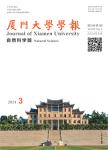Research on Chemical Mechanical Planarization for Functional Ceramics
Research on Chemical Mechanical Planarization for Functional Ceramics出 版 物:《厦门大学学报(自然科学版)》 (Journal of Xiamen University:Natural Science)
年 卷 期:2002年第41卷第S1期
页 面:52-53页
核心收录:
学科分类:08[工学] 0805[工学-材料科学与工程(可授工学、理学学位)] 080502[工学-材料学]
基 金:ProjectsupportedbyZhejiangProvincialNaturalScienceFoundationofChina (5 0 1 0 97 5 0 1 0 96)andYoungScientistTrainingProjectofZhejiangProvincialNaturalScienceFoundationofChina
主 题:functional ceramic CMP no damage layer
摘 要:Presently, the products of functional ceramic are widely applied in the light & mechatronics fields such as communication, aeronautic and astronautic engineering, military affairs and home-use electrical appliance etc. It’s performance of working is mainly determined by the physical performance of the surface. And therefore the roughness and the affected layer’s depth of the final processing surface have a direct influence to the performance of the device. It is obvious that how to guarantee the processing quality of functional ceramic is a kernel problem whether it can achieve the purpose of application or not. Ultra-precision planarization is usually as the final processing method of functional ceramic substrates, and the mirror surface of Ra 0.01~0.002 μm can be obtained by ultra-precision polishing. For the ultra-precision planarization processing of functional ceramic material, simplex chemical or mechanical polishing method is very difficult to achieve the technic demands, and furthermore various defects of processing exist in the surface of crystal after planarization. However, chemical mechanical planarization (CMP) which has emerged recently as a new indispensable processing technique for higher degree planarization of functional ceramic is be able to satisfy the processing requests from the aspects of processing performance and rate. The current paper systematically introduces the processing course of functional ceramic by using chemical mechanical planarization. In addition, material removal mechanism is analyzed, and the choosing of processing conditions and components and effect of polishing slurry are discussed. Then the present research status and development trend of CMP technology for functional ceramic are discussed. Finally the current existing main questions and their solutions are presented.



